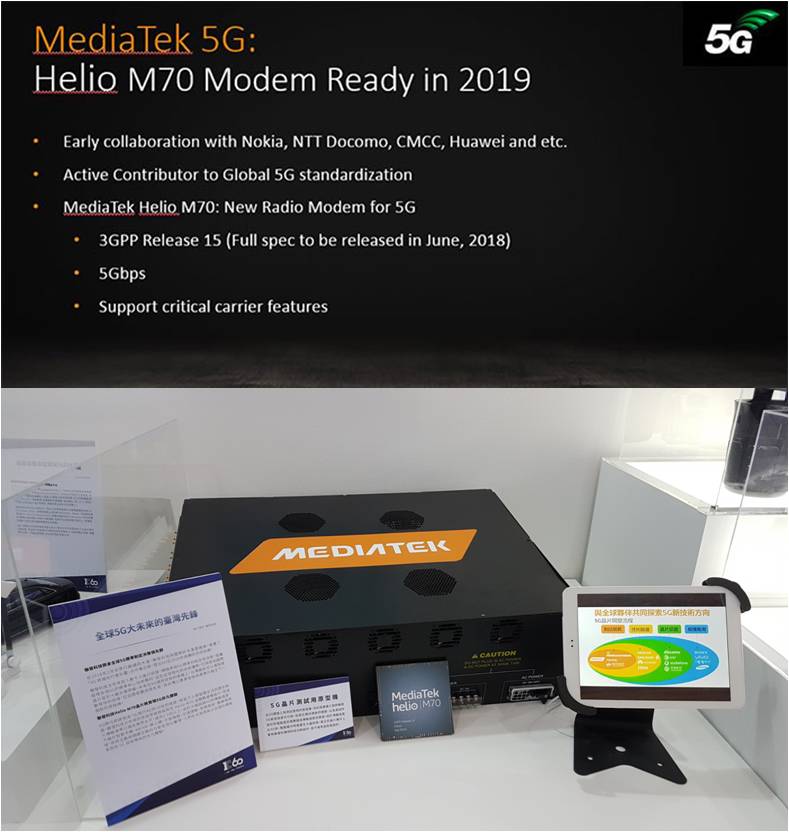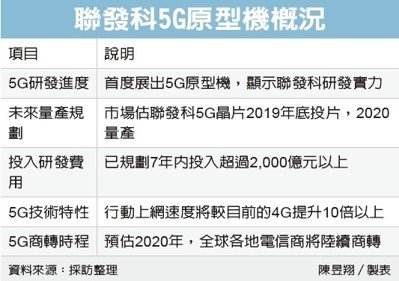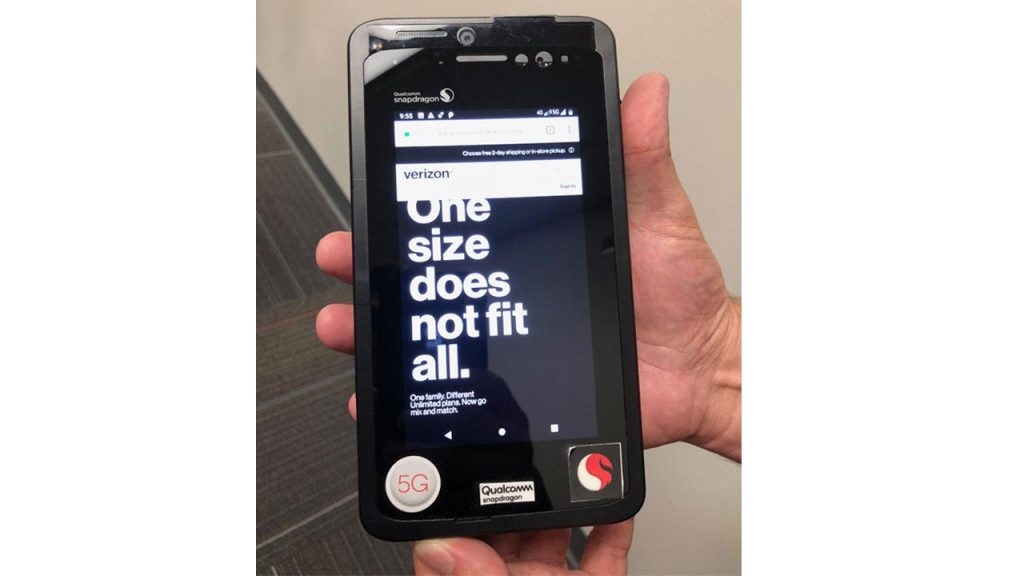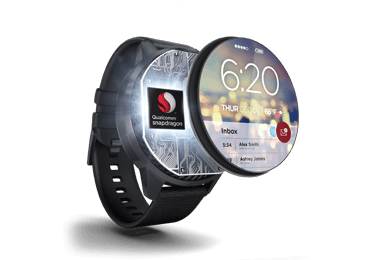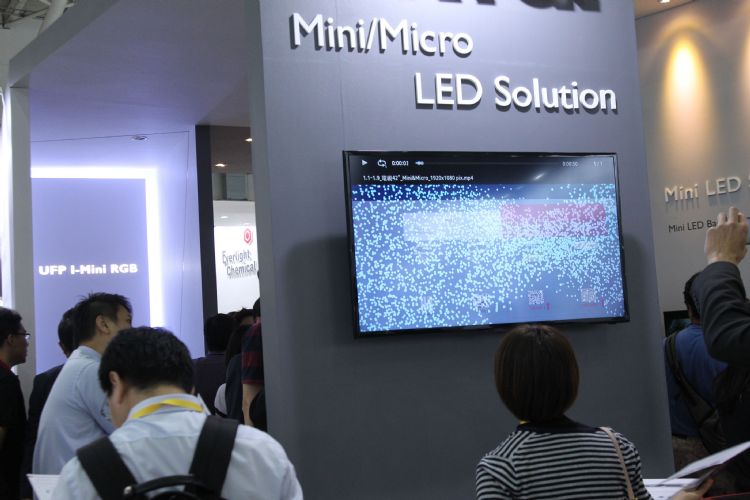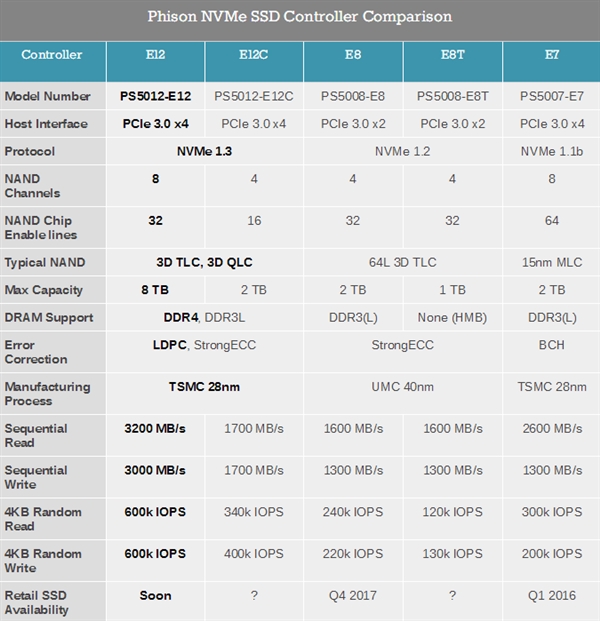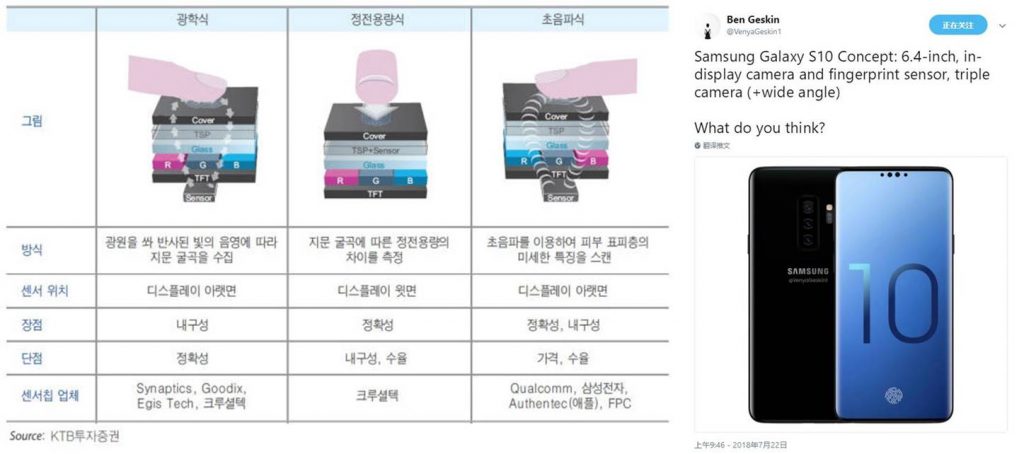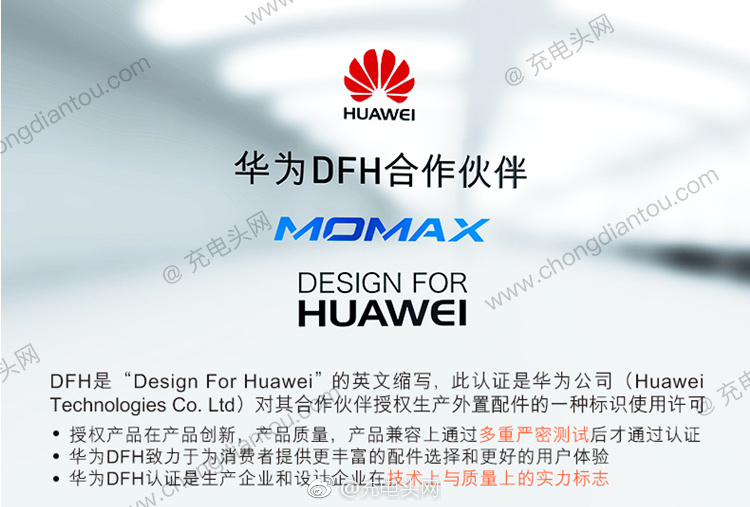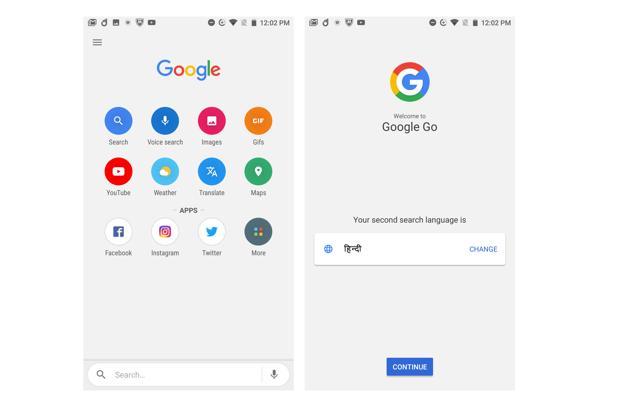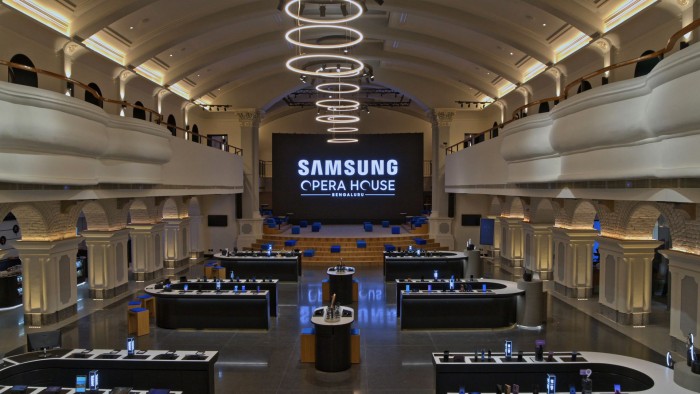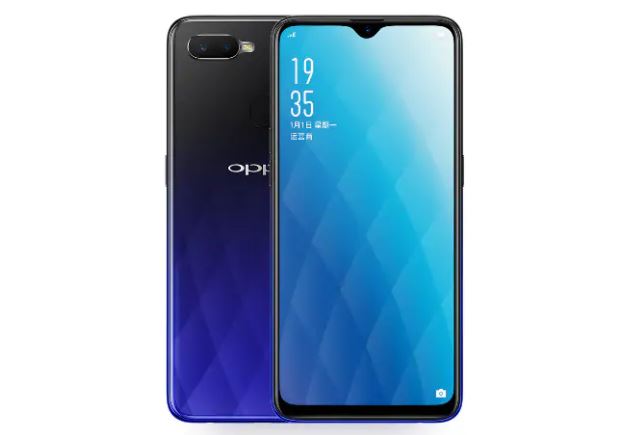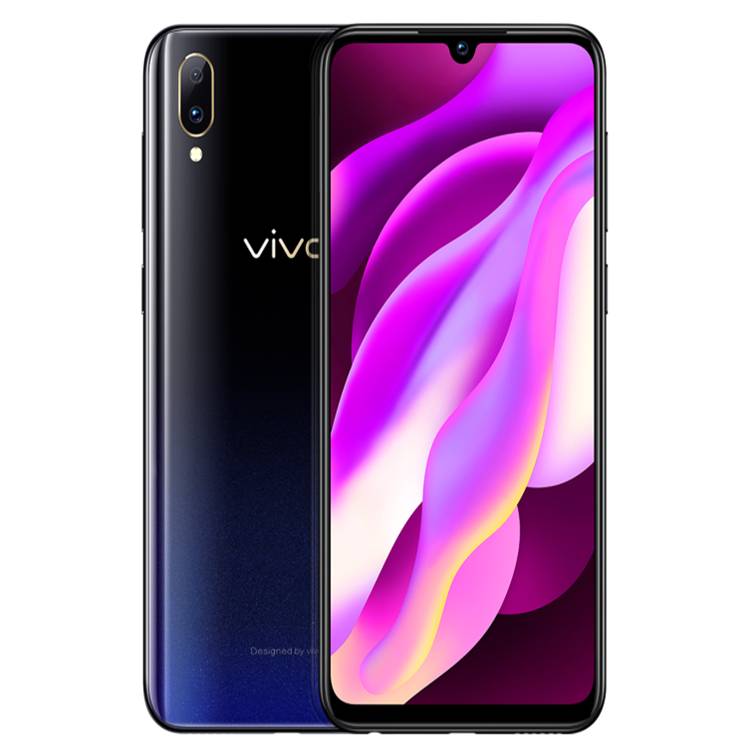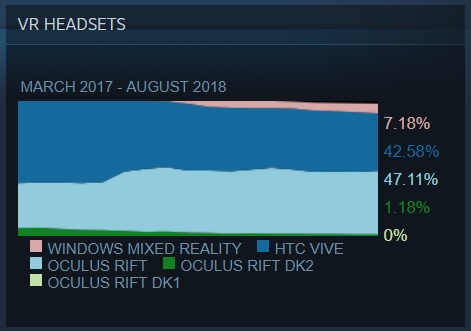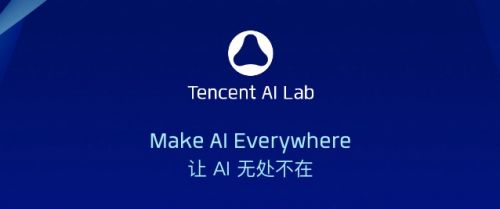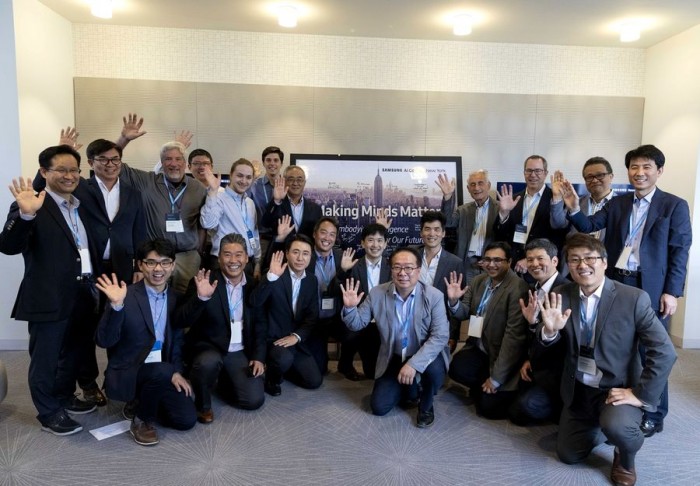
09-11 Remember 9/11: MediaTek has announced its first 5G baseband M70; Ericsson and Qualcomm have jointly conducted what they claim is “industry’s first” 3GPP-compliant 5G NR call over the mmWave band; etc.
Chipsets
MediaTek has announced its first 5G baseband M70, which is manufactured using the 7nm process and supports the 3GPP Release 15 standard at a rate of 5Gbps. MediaTek has already stated that it will launch a new generation of 5G SoC chips by the end of 2019. The 5G baseband is integrated into the handset processor , which will further reduce the cost of 5G handsets. MediaTek has officially announced their 5G strategy in Mar 2018, focusing on the mid-end market from the first day of entering the market. (GizChina, My Smart Price, Go Android, TechNews, CNYES, UDN)
Ericsson and Qualcomm have jointly conducted what they claim is “industry’s first” 3GPP-compliant 5G NR call over the millimeter wave (mmWave) band with a smartphone form factor mobile device. The over the air (OTA) call is conducted in the Ericsson Lab in Kista, Sweden, using the 39-GHz frequency band and Ericsson’s commercial 5G NR radio AIR 5331 and baseband products as well as a mobile test device with integrated Qualcomm Snapdragon X50 5G modem and RF subsystem. (Android Headlines, Telecom Asia, Qualcomm, ZDNet, Huanqiu, EEO)
Qualcomm has launched a new chipset for wearable devices, the Snapdragon Wear 3100. The main processor is a quad-core A7 chip, which is meant to drive the main usage experience of the device, along with an efficient integrated DSP, and an “ultra-low power co-processor”. (Qualcomm, Apple Insider, iFeng, IT Home)
Intel is acquiring NetSpeed Systems, a San Jose, California-based company that provides system-on-chip (SoC) design tools and interconnect fabric IP. NetSpeed has highly configurable and synthesizable offerings that could help Intel more quickly and cost-effectively design, develop, and test new system-on-chips (SoCs), or all-in-one chips that put a full working system on a single piece of silicon. (CN Beta, VentureBeat, ZDNet, TechCrunch, Intel)
Intel is allegedly encountering tight 14nm process production capacity in-house, and is looking to outsource part of its 14nm chipset production to TSMC. Intel intends to give priority to its high-margin products mainly server-use processors and chipsets amid its tight 14nm process capacity, and therefore plans to outsource the production of its entry-level H310 and several other 300 series chipsets to TSMC. (CN Beta, Digitimes, press)
Touch Display
Smartisan CEO Luo Yonghao believes that in 2019 the whole industry of smartphone would not apply non-notch display, and majority would adopt pop-up mechanism, similar to that of vivo NEX. (CN Beta, Sina)
Samsung Electronics will offer a 75” MicroLED TV in 2019 with the display panel to be made up of 30- by 50-micron micro LED chips produced by PlayNitide, according to Digitimes. PlayNitride has delivered samples of its 15- by 30-micron micro LEDs to clients and plans to further reduce the chip size to 2.5- by 2.5-micron for smart wearable devices, with production to begin as early as 2H19. (Digitimes, press, Digitimes, Sigma Intell)
Storage
Phison has announced that it has initiated mass production and shipments of its latest PS5012-E12 controller, which is expected to bring Phison and its allies back to the high-end market segment. The controller features eight NAND channels with 32 CE targets, a DDR4/DDR3L interface for DRAM caching, and a PCIe 3.0 x4 interface. As for features, the chip supports the NVMe 1.3 protocol, LDPC-based error correction, a variety of encryption methods (AES-256, TCG Opal, TCG Pyrite), and a number of proprietary technologies to improve reliability and durability of SSDs. (CN Beta, AnandTech)
Biometrics
Samsung Galaxy S10 allegedly will be launched with Qualcomm’s third-generation ultrasonic screen fingerprint reader. Qualcomm’s second-generation sensor can work accurately through glass with a thickness of 800µm (0.8mm), while the first generation is 300µm (0.3mm). This sensor may be manufactured by General Interface Solutions (GIS) and O-Film. (GizChina, GSM Arena, ET News, Sina, CN Beta)
Battery
Sony Corporation has announced that it has joined RE100, an initiative operated by the international non-government organization (NGO) The Climate Group1 in partnership with CDP2. In so doing, Sony will aim to use 100% renewable electricity for all of its business sites by 2040. RE100 consists of companies committed to using 100% renewable electricity, and comprises over 140 member companies worldwide (as 10 Sept 2018). (CN Beta, CNBC, PV-Tech, The Financial)
Phone
Bank of America Merrill Lynch analyst Wamsi Mohan believes that Apple could ask Hon Hai and Pegatron to shift a small portion of their iPhone manufacturing to the US in response to President Trump’s request. He has concluded for the iPhone (not currently impacted by Tariffs) moving production (100% of final assembly) to the U.S. would need 20% price increases to offset the incremental labor costs. (CN Beta, CNBC, The Hill, Neowin, IB Times)
Huawei has introduced its own brand accessories certification program, dubbed “Design for Huawei” (DFH). The rigorous tests which authorized third-party products will undergo before certification includes; product innovation, product quality, and product compatibility. (CN Beta, China Tech Today)
Huawei’s President of Consumer Business Software Engineering, Dr. Wang Chenglu has refuted rumors about it developing its in-house Operating system. (GizChina, My Drivers)
Realme is reportedly exploring opportunities to sell its devices through offline channels along with the online stores in order to increase sales and grow its market share. The CEO of Realme India Madhav Sheth indicates that they can try 2 different channels, and if they do not have an offline channel, it is difficult to cater to this segment. (Gizmo China, Economic Times)
Google Go, an app which ships on Android Go-powered phones, hit 10M installs on the Play Store. Since Android Go phones only started being sold in 2018, that means Android Go-powered handsets accounted for around 1.6% of sales this year at most — again, the real number is likely much less than that. (CN Beta, My Drivers, Android Police, Mobile Syrup)
According to Strategy Analytics, Samsung Electronics’ smartphone shipments are projected to fall short of 300M units in 2018 for the first time since 2013. Samsung’s smartphone shipments were expected to reach 298.5M units in 2018. (CN Beta, Business Korea)
Samsung has opened its largest global retail outlet for its products in India. The store in the city of Bengaluru’s former Opera House occupies around 33,000 square feet. Samsung says that it plans to to expand its reach to other metropolitan cities, and has a target of opening 10 such stores in India. (CN Beta, Business Standard, Mobile World Live, Digit)
OPPO A7x is launched in China – 6.3” 1080×2430 FHD+ waterdrop, display, MediaTek Helio P60, rear dual 16MP-2MP + front 16MP, 4GB+128GB, Android 8.1, 4230mAh, CNY2,099. (GizChina, NDTV, BGR)
vivo Y97 is launched in China – 6.3” 2280×1080 FHD+ Super AMOLED waterdrop, MediaTek Helio P60, rear 16MP-2MP + front 16MP, 4GB+128GB, Android 8.1, 3240mAh, CNY1,998. (Gizmo China, vivo)
Augmented / Virtual Reality
Steam’s survey in Aug 2018 shows less than a 2% difference in the usage of the 2 leading PC VR headsets on Valve’s gaming platform, but that gap grew to just under 4% in Aug 2018. HTC Vive came in with 42.58% of the total share (down from 44.35% last month) and Oculus Rift took home 47.11% (slightly up from 46.18%). Valve also deemed Rift the most popular VR headset in use on its platform by 0.35%. (CN Beta, Upload VR, Steam)
Home
Samsung is releasing a SmartThings tracker that is powered by LTE-M to help find stuff. The cellular network allows it to be used for real-time location tracking for pets, kids or misplaced items. The power button on the tracker, when pressed twice, will send its location through the SmartThings app, and there’s also an option to send an SOS. (CN Beta, The Verge)
Artificial Intelligence
Tencent AI Lab has announced that it will open source its multi-label image dataset ML-Images and deep residual network ResNet-101 by the end of Sept 2018. ML-Images contains 18M images and more than 11,000 common object categories; while ResNet-101 has reached the highest precision level in the industry. (CN Beta, Medium)
Samsung Electronics has announced today that it will open a new artificial intelligence (AI) research center in New York City, the U.S., to strengthen its AI capabilities. (Neowin, Samsung, CN Beta)
